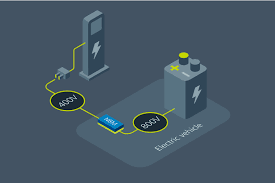As we cruise into 2023, electric vehicles (EVs) are rapidly becoming the norm on highways across the globe. A recent report from Bloomberg Green indicates a 40% increase in EV sales compared to the previous year, signaling a shift in driver preferences towards sustainable travel. However, the key to unlocking the full potential of EVs lies in the evolution of fast charging networks. In this article, we will explore how these networks are revolutionizing EV road trips, making them more convenient and accessible than ever before. We’ll delve into the latest advancements in charging technology, the expansion of infrastructure, and practical tips for your next electrified adventure.
The Rise of Fast Charging Networks
How Fast Charging Works
Fast charging technology has transformed the EV landscape, offering charging speeds that dramatically reduce downtime during road trips. Unlike conventional home charging stations, fast chargers—such as those provided by Tesla Superchargers and Ionity—can recharge an EV battery up to 80% in just 30 minutes. This is made possible through high power output, typically ranging from 50 kW to 350 kW, depending on the charger and vehicle compatibility.
Key components of fast charging include:
– High power output: Faster transfer of energy to the vehicle.
– Liquid-cooled cables: Prevent overheating and maintain efficiency.
– Advanced battery management systems: Optimize charging speed and battery health.
Expansion of Charging Infrastructure
The expansion of fast charging networks is pivotal for the widespread adoption of EVs. According to InsideEVs, there are now over 1 million public charging stations worldwide, with fast chargers making up a significant portion. Companies like Electrify America, ChargePoint, and EVgo are leading the charge in the U.S., while Ionity and Fastned are expanding across Europe.
Recent developments include:
– Electrify America’s 2023 goal: To have over 1,800 fast charging stations across North America.
– Ionity’s pan-European expansion: Plans to increase their network to 7,000 chargers by 2025.
– Tesla’s ongoing expansion: Continues to add Supercharger stations globally, with a focus on strategic locations for road trip routes.
Planning Your EV Road Trip
Tips for a Smooth Journey
When planning an EV road trip, preparation is key to ensuring a smooth and enjoyable journey. Here are some practical tips to keep in mind:
- Route Planning: Use apps like A Better Routeplanner or PlugShare to map out charging stops along your route, ensuring you never run out of juice.
- Vehicle Compatibility: Check if your EV can utilize fast chargers along your route, especially if you’re driving a non-Tesla vehicle.
- Charging Etiquette: Be mindful of other drivers waiting to charge; move your vehicle once charging is complete to free up the station.
Compare and Contrast: Fast Charging Networks
With various networks available, it’s essential to compare their offerings before hitting the road. Here’s a quick comparison of some popular fast charging networks:
| Network | Coverage | Max Charging Speed | App/Payment Options |
|---|---|---|---|
| Tesla Supercharger | Global | 250 kW | Tesla app, credit card |
| Electrify America | North America | 350 kW | App, credit card, RFID |
| Ionity | Europe | 350 kW | App, RFID, Plug & Charge |
| EVgo | U.S. | 350 kW | App, credit card, RFID |
What to Look for in a Fast Charging Station
When selecting a fast charging station, consider the following factors:
– Location: Proximity to amenities like restrooms, dining, and shopping.
– Availability: Monitor real-time availability through network apps.
– Pricing: Compare costs as they can vary significantly between networks.
The Future of EV Road Trips
Upcoming Trends and Technologies
The future of EV road trips looks promising with several advancements on the horizon. Expect to see:
– Bidirectional charging: Allows EVs to return power to the grid or power homes, providing added utility.
– Wireless charging: Promises hassle-free charging without cables, with trials already underway in cities like Oslo, Norway.
– Enhanced battery technology: Newer batteries with higher energy densities are expected to offer longer ranges and faster charging times, as highlighted by recent reports from MIT Technology Review.
Final Thoughts
In conclusion, fast charging networks are undeniably transforming the EV road trip experience, making long-distance travel more feasible and attractive for electric vehicle owners. With strategic planning and the right charging network, road trips in 2023 and beyond are set to be both exhilarating and sustainable. As technology continues to evolve, the future of EV travel looks bright, offering endless possibilities for eco-conscious adventurers.
What are your thoughts on the latest advancements in fast charging technology? Share your experiences and join the conversation as we explore the electrifying future of road travel.

